 artists
artists
ART, PUBLIC SPACE, SPECULATION & MORE-THAN-HUMAN IMAGINATIONS
by Eva Bubla
26/08/2024
With some members of the network, we were sitting on the benches of BASE Milano a couple of months ago, discussing stories - “narratives” - that we find crucial to be shared before our project (UN)COMMON SPACES is coming to an end in October 2024.
We were just after a collective experiment of imagining our future citiZENship in the game designed and facilitated by our IN SITU citizens Fabienne, Lucile, and Marc. I have a faint memory of how I happened to become the mayor in our city, but I clearly remember Alina being the city architect. We had enthusiastic discussions on the importance of including more-than-human perspectives into the design of our city. In our future, it is no question that both human and non-human agencies have a place and “word to say”.
The question is, how to engage non-humans in the co-creation of our public spaces?
Fortunately, our imaginary city is a long-term project and we still have time to come up with the masterplan. However, as our reality is embedded in a world where biodiversity loss, climate change, environmental degradation and the overpopulation of urban areas are the status quo, I feel there is an urgency to explore possible methodologies or ways of doing with the tools that we have in our present lives, as artists.
But where do we start?
First and foremost, we need to acknowledge that human and non-human - or “more-than-human” - lives are fundamentally intertwined and inseparable, and our human-centered approaches fail to address these complexities. There is a need to decenter human thinking and put more-than-human agencies alike on our mental map; other lifeforms, animals, plants, microorganisms, physical forces, or even spiritual entities that we share this world with. The realization and internalization of these encounters may lead to new forms of connections, behaviors, interactions with those other species and other worlds.
But how do we grasp the experiences of non-humans and make it visible, tangible, available for others?
I believe the answer is somewhere between - or at the intersection of - research (science fact, local ecological knowledge, indigenous practices) and speculation (artistic imagination).
Let me give you a couple of examples, in accordance with the nature of this narrative, drawing on my own projects and experiments within or connected to (UN)COMMON SPACES.
#1_ land
In a former narrative, I gave an extensive account of my experiences with Gudebergjordet, a monoculture farm in the city of Fredrikstad, Norway. It is a unique agricultural area within the city, a plot of diverse intentions and voices. Today, it is used to grow grains for feeding livestock, but it would be suitable to grow vegetables as well. However, though it has been removed from the agenda, there is also a risk of turning it into a construction site in line with emerging investment interests. The future of this public space and non-human entity is greatly defined by human voices and desires.
One purpose of my residency spent on the land was to try to listen to the land itself as much as possible. I have gone into noble silence for five days to focus my attention, followed my pre-designed exploratory exercises in the beginning, then organically started to sharpen my senses for what surrounds me: diverse animal and plant species, and a land rich in microbial life. As the days passed, external observations somehow transformed into internal sensations, where in a semi-meditative state I could no longer feel the barrier between my human body and the body of Gudebergjordet. Did I really feel what the land felt at the moment, or was it only a projection of my own human mind, anthropomorphizing the land around me? Maybe both. I must have been affected by local stories and soil science, maybe my own life experiences. But the magic is in the experimentation of trying to shift perspectives and invite others to join you: local citizens, stakeholders, or in case of a land being in such a fragile position, even policymakers. Make them imagine a more-than-human perspective of the land, make them feel it is not ‘empty’ but home of diverse visible and invisible species with their own agendas.
This was one reason why the idea of the creation of Gudebergjordet Protection Agency (GPA) appeared. The Agency is a fictional organization and artistic experiment to articulate more-than-human voices and advocate multispecies rights - the legal rights for the complex ecosystem of Gudebergjordet: the land and water bodies, the macro and microorganisms, and as James Moore suggested, the topsoil especially. GPA has various pillars: a biodiverse farm area but also a “head office” that hosts various (guest) artist and citizen activities, eg. land meditations, somatic events, or workshops that target writing a Declaration of the Rights of Gudebergjordet and an Action Plan, just to mention a few.
Such a public workshop has not happened yet, but I did write a first draft that can be developed further with local citizens and stakeholders, policymakers, even in other locations adapted to the local context. It is a tool and thought experiment to relate in novel ways to our ecosystem, experiencing the entanglement between species and embodying the principles of multispecies care and multispecies rights.
 |  |
| © Eva Bubla: Declaration of Multispecies Rights (draft). 2024. Photo by the Artist | |
#2_ air
When we think of air, we tend to think of it as something empty. However, on the contrary, it is very much full. It is full of invisible gases, microorganisms, scents, molecules, and traces of our human practices.
The first version of Designated Breathing Zone was inspired by the growing level of air pollution that I experienced in my former home in Indonesia, but it is equally relevant in my current city, Budapest as well. The spread of urbanization is a global problem, with the loss of green spaces, road traffic and industrial activities all contributing to the deteriorating air quality of our urban spaces. Air pollution is an acute problem in Hungary, causing the premature deaths of 13.000 people a year at national level, according to Clean Air Action Group publications, not to mention other health and environmental impacts.
The installation, which incubates local plants, serves as a space for dialogue, drawing attention to the importance and beneficial effects of green spaces, allowing them to be experienced artistically, physically and sensorially.
 | 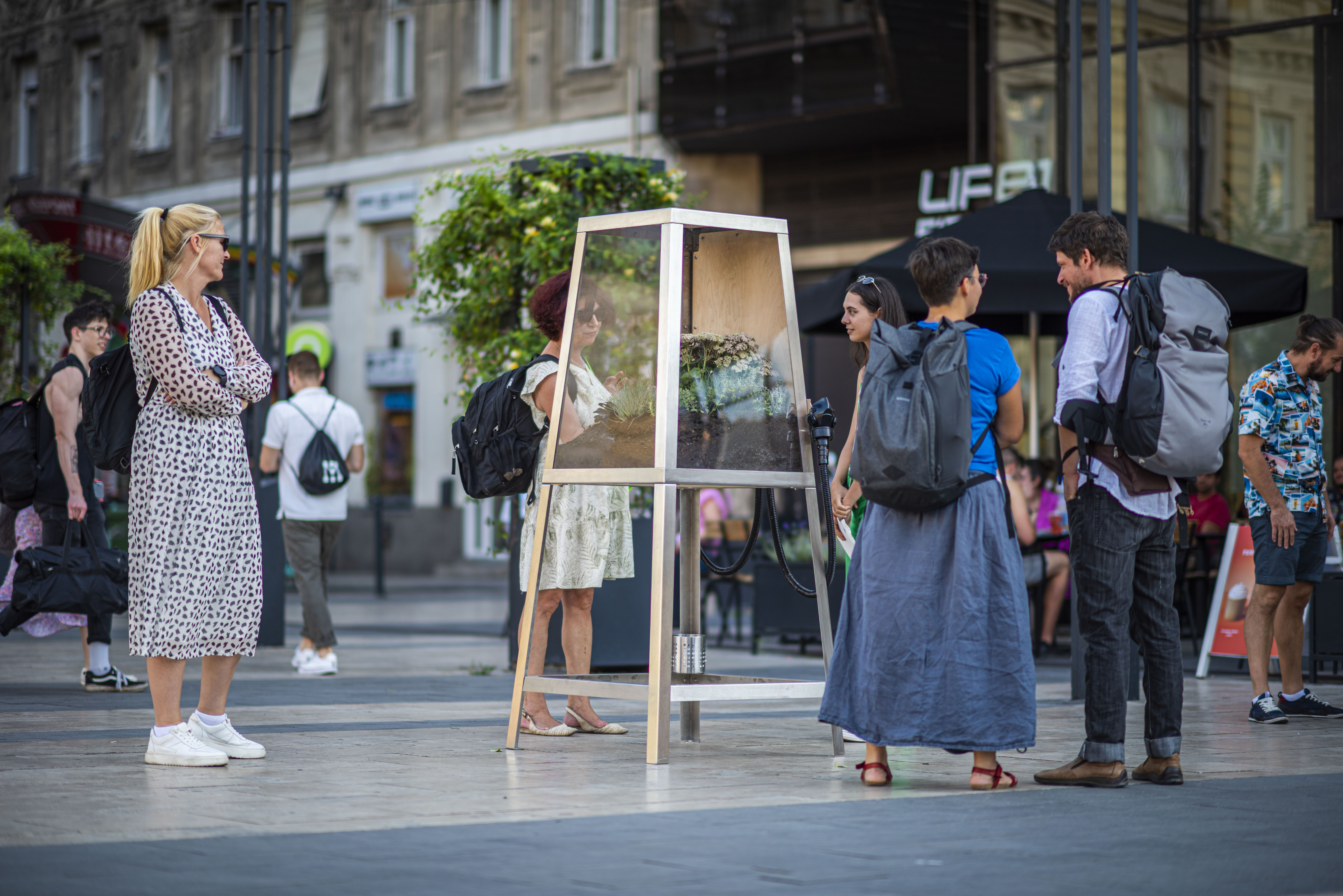 |
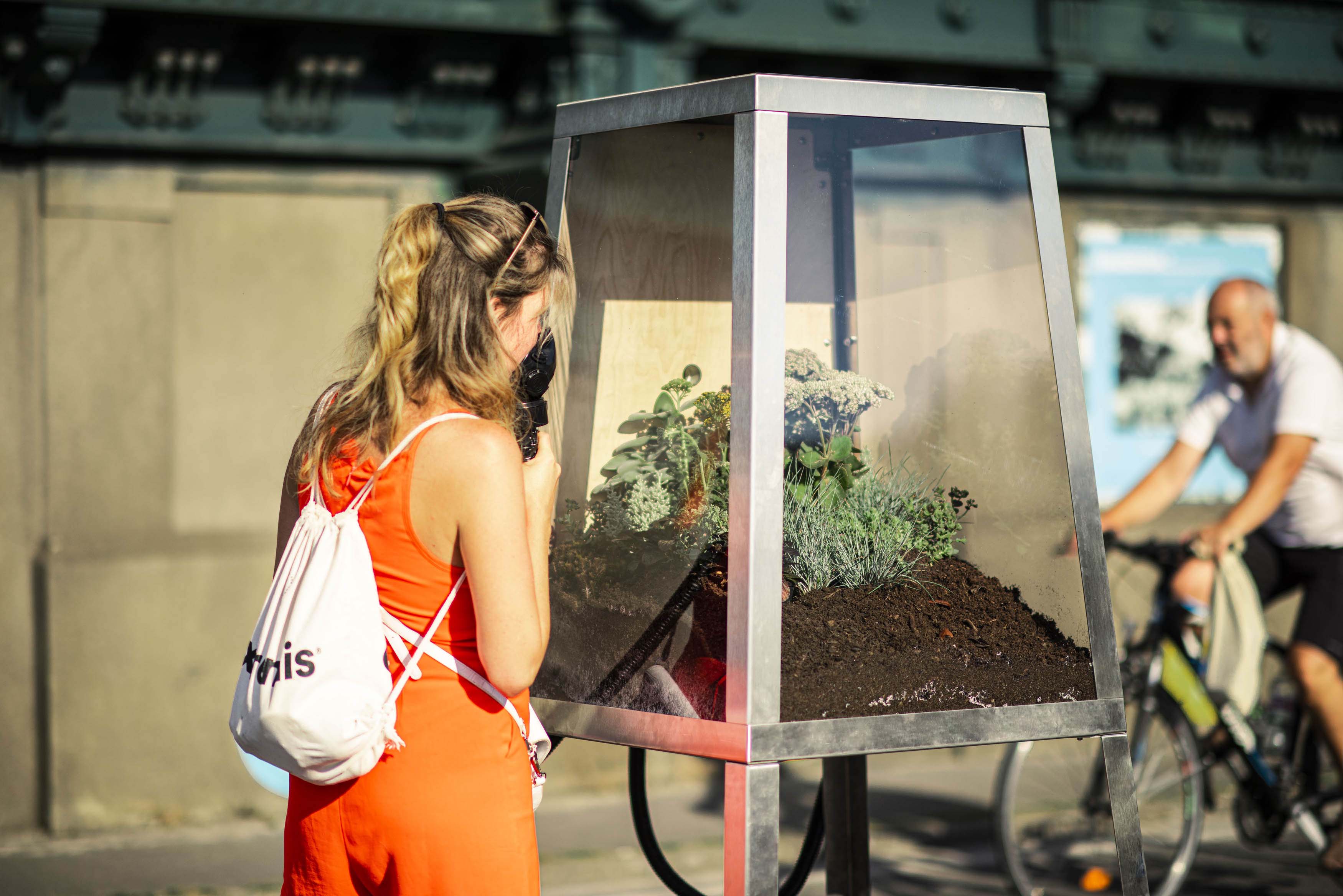 | |
© Eva Bubla: Designated Breathing Zone 2.0. PLACCC Festival, Budapest, 2023. Photo by Attila Balogh
But what is beyond the so-called ecosystem services of trees? Or how could we experience breathing from the perspective of the air itself? These are questions that started to concern me.
So again, based on scientific research and knowledge, but also using artistic imagination, I started to speculate. I tried to put myself in the position of air, and to get into a dialogue with existing urban greens and lifeforms. This is how the text of Breathing was born, which is a sound installation found in the latest version of Designated Breathing Zone, an intimate space in the neighborhood of Gellért Hill’s lush canopies.
Writing the text and trying to think from the perspective of air was an extremely interesting process, as it made me realize how difficult it is to leave human perception for something so invisible and unknown to the human eye and mind. I read a dozen of scientific literature, had enriching conversations with experts of ecology, biology, social sciences, nature facilitation and ecopsychology, and also spent hours contemplating, or observing my own body and thinking what the air entering and leaving it might sense from that. On a number of occasions I even had to remind myself to focus on air in its complexity, and not only oxygen, a useful element of it for my human body. It was like a training for my brain to really widen the human horizon, while being absolutely aware that essentially my human existence colors everything.
 | 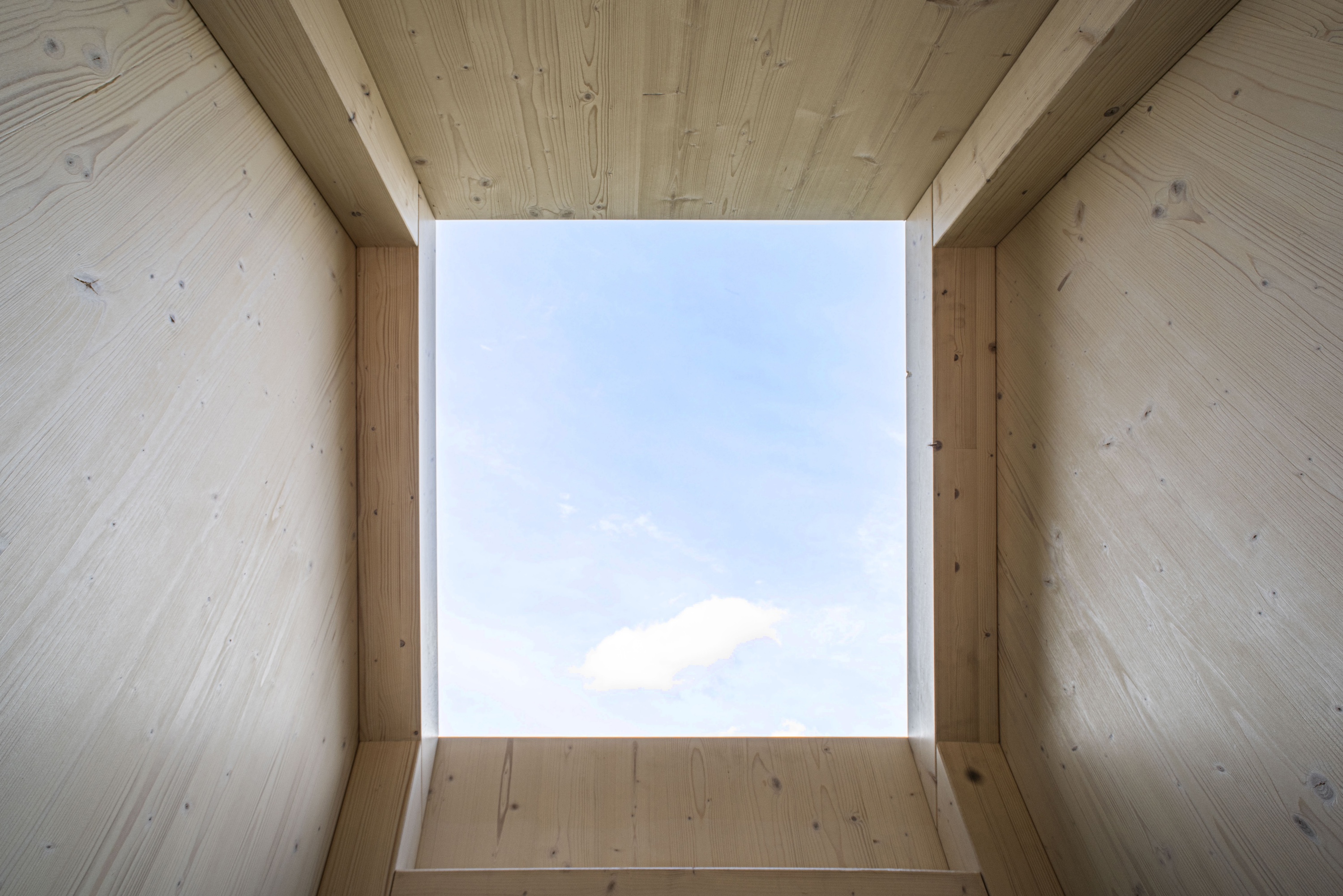 | 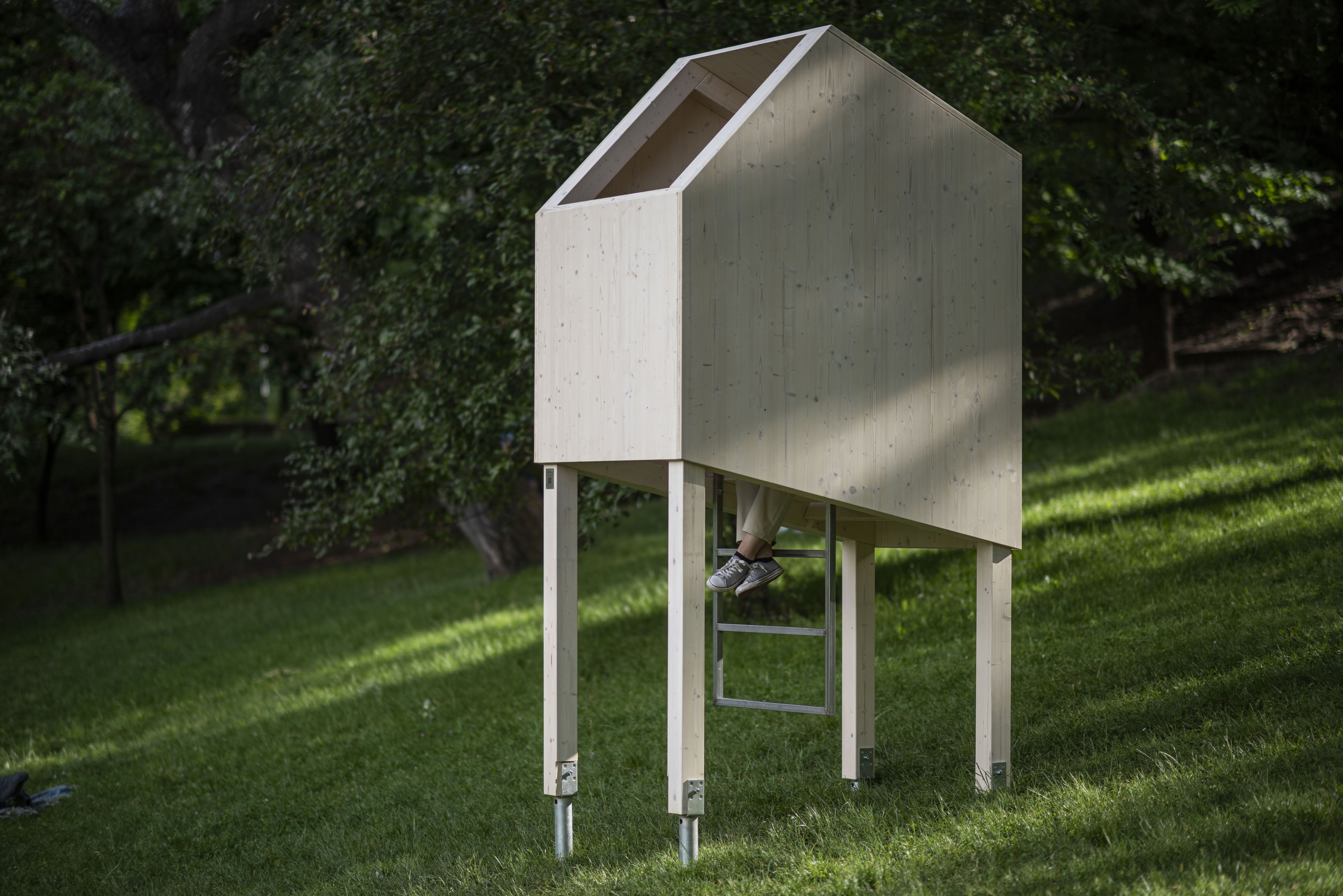 |
| © Eva Bubla: Designated Breathing Zone 3.0. PLACCC extra, Budapest, 2024. Photo by Attila Balogh | ||
By directing the view of the visitors to the “empty” sky and filling it with the sound of the air talking and the stories of the various organisms that inhabit it, the installation aims to make people stop and listen to the various lifeforms that they share their home with, and take them into consideration, especially on one of the last large contiguous green areas in Budapest which is also slowly taken over by investments and constructions.
#3_ the city
Why do we need trees in urban spaces, after all? What do a handful of soil, the forest, or some invisible creatures have to do with the health of our cities and our human bodies?
A group of Finnish ecologists, including Marja Roslund and Mira Grönroos, two members of our Microbial Childhood Collaboratory (MCC) research group, worked closely with urban daycares. They tested and concluded that contact with microbially rich natural materials can diversify human skin microbiota, and greening daycare yards can decrease relative abundance of potentially pathogenic bacteria in soil, positively affecting children’s skin microbiota and immune system function.
The findings can lead us to conclusions not only about children’s health but also human and more-than-human health itself, shedding light on how much our lives are intertwined with our environment. All bodies are interconnected microbial ecosystems, living and breathing habitats of tiny organisms: bodies of cities, bodies of waters, air, soil, and our own human bodies are inseparable. The health of one depends on that of the other.
Microbial Futures Lab, a project rooted in the collaboration with MCC, is a traveling laboratory, a constantly expanding collection of future medicines, treatments, rites and narratives reflecting on this interconnectedness, the mutual well-being of human and more-than-human lifeforms. It attempts to imagine the medicines of the future, in a world where the state of our environment and our present relationship with it is compromised. What speculative visions of the future, old-new rites, treatments and medicines can we imagine if we look at the concept of health in a holistic way, if we understand it as the mutual well-being of symbiotically living human and more-than-human lifeforms?
With members of the research team, we have developed a patient information leaflet for a speculative medicine called SymbiFarm, which, in a possible future, is used to treat microbial dysbiosis and a lack of immunological resilience. Since then, further narratives, medicines and treatments have been gathered and developed, and audiences have been engaged in public workshops with the purpose of shared discussions and to expand the collection with new narratives and prototypes.
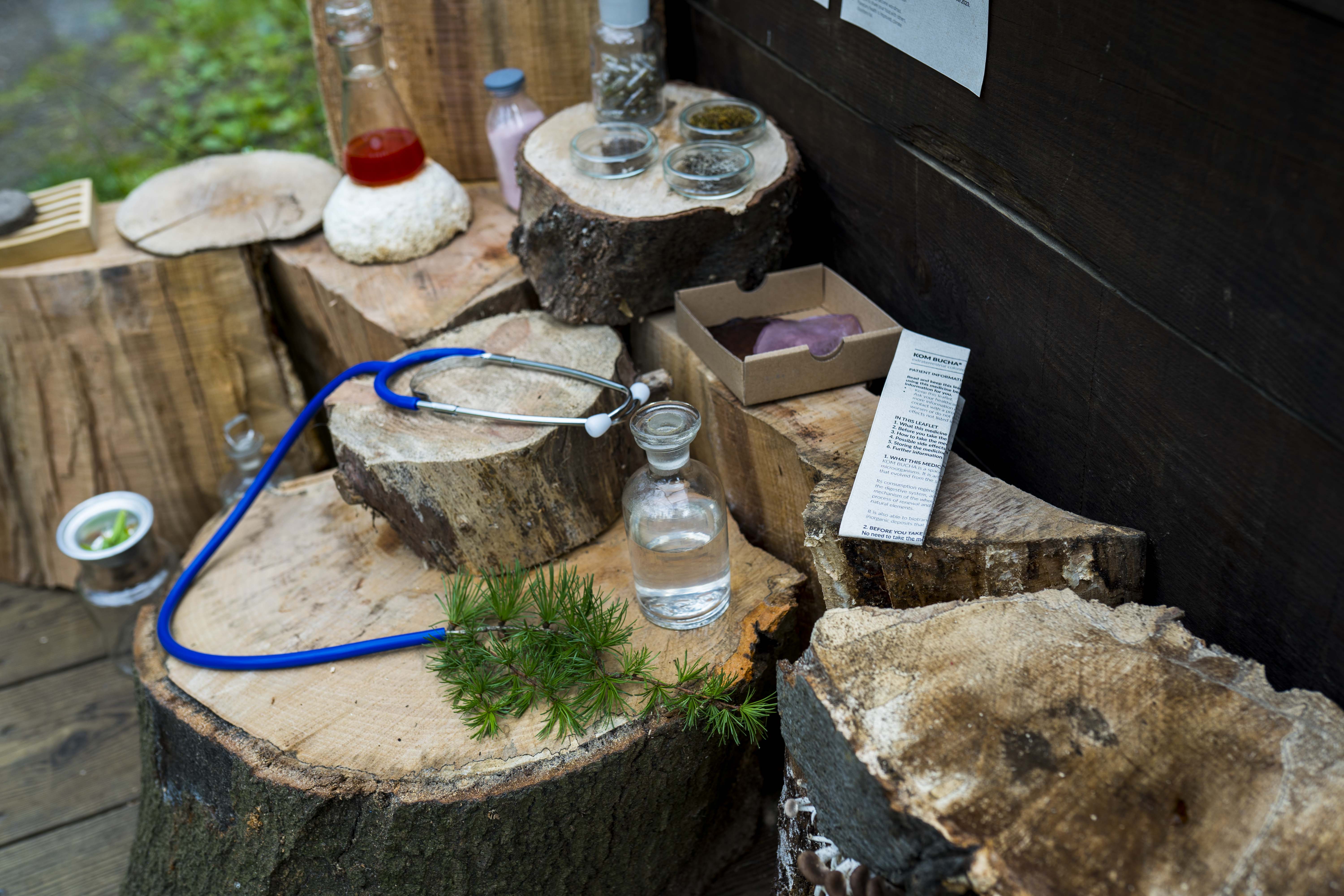 | |
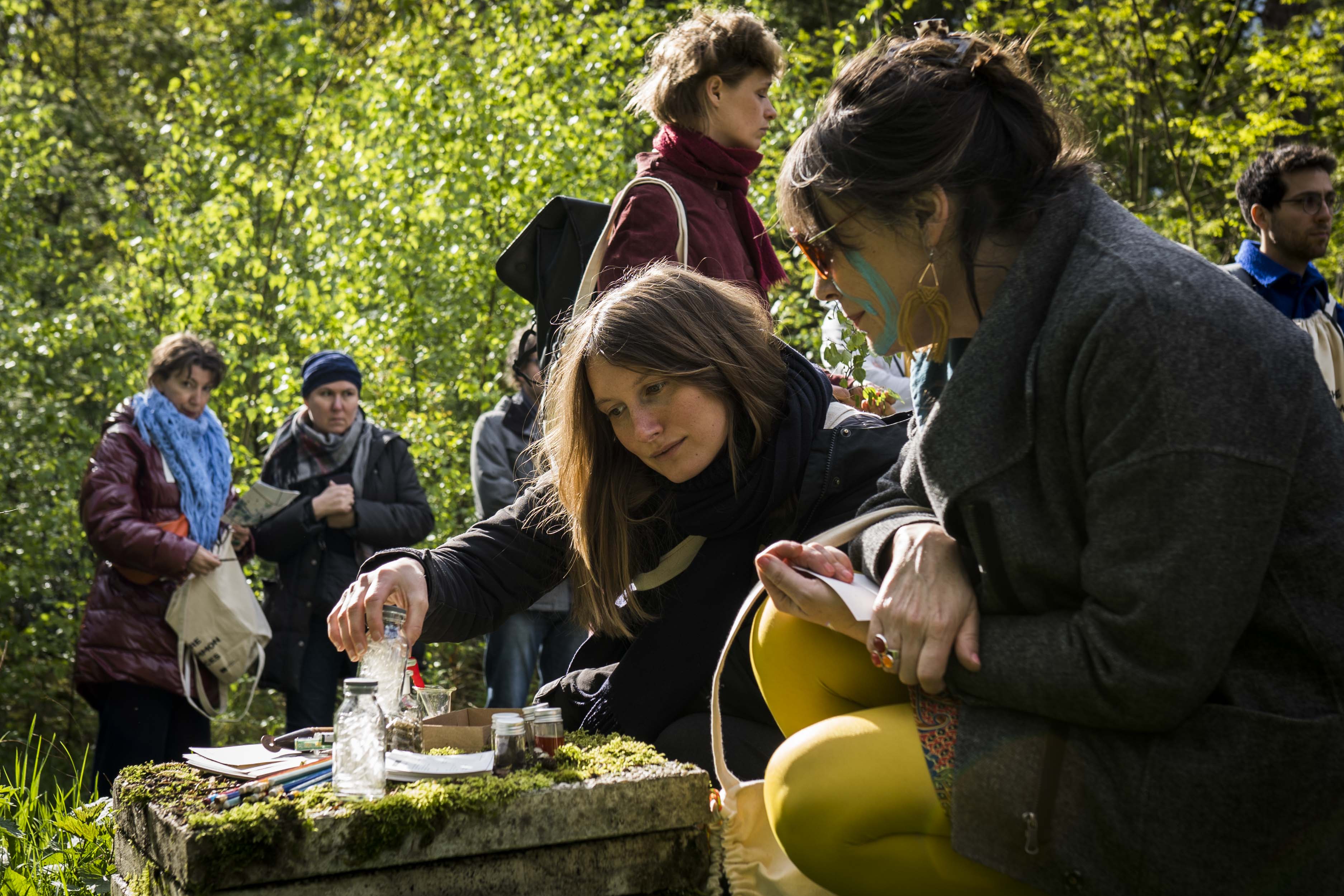 | 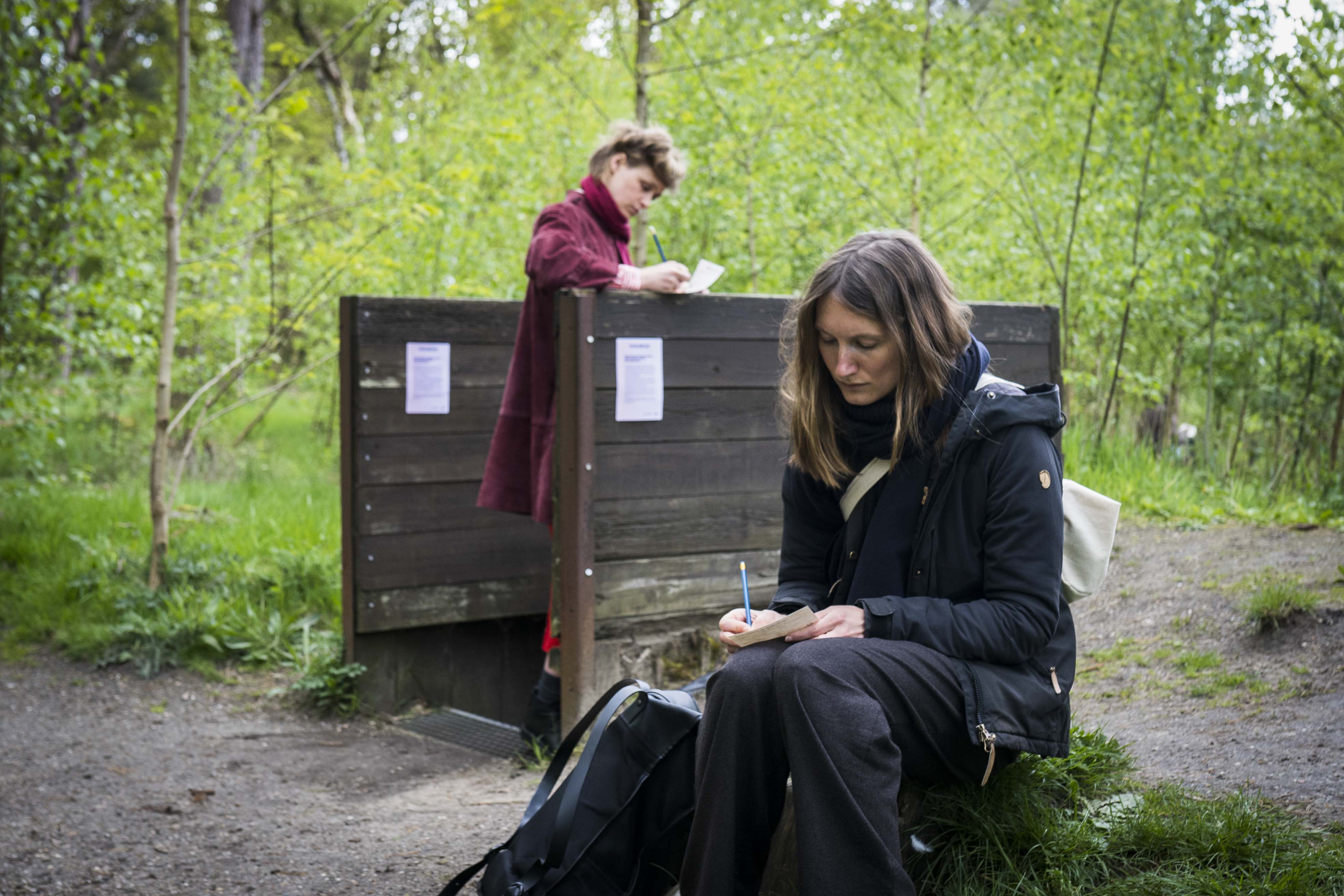 |
| © Eva Bubla: Microbial Futures Lab at IN SITU Open Day, Pelt, 2024. Photo by Pedro Morato Gabao | |
This season, Microbial Futures Lab has been traveling to various locations within the network as well. Its pop-up pharmacy appeared at HAPUfest in Pristina, at PLACCC in Budapest, and will be there at FAROUT Festival in BASE Milan to showcase the stories of local patients and to invite the public to speculate together about the future of these cities by designing new rites and medicines for the various lifeforms that inhabit them.
To prepare for FAROUT, in the middle of July I gave a Future Medicine workshop for local citizens - artists, horticulturists, designers, architects - in BASE Milan, which triggered valuable discussions about possible Milan-specific patients. I learned about the overcrowded spots of Milan and its restless inhabitants, parts that are the victim of heavy construction work without any consideration of the local iconic flora, about a forest that grew on contaminated soil, and polluted city canals hardly accessible for the public.
In Prishtina, participants were looking for treatments for the air and the streets of the city. A huge focus was given to the problem of air pollution, which is a result of (illegal) use of coal in the area, especially in the winter for heating purposes, but microbial solutions for the peaceful coexistence of stray dogs and humans was also sought for.
Budapest-based workshop participants dominantly chose the “skin of the city” as their patient, looking for solutions to treat the heavily asphalted surfaces and the soil beneath.
There have been numerous proposals for treatments and medicines by the Lab’s new local healthcare advisors in each city, and the work continues, as the development of ideas into material forms continues with them.
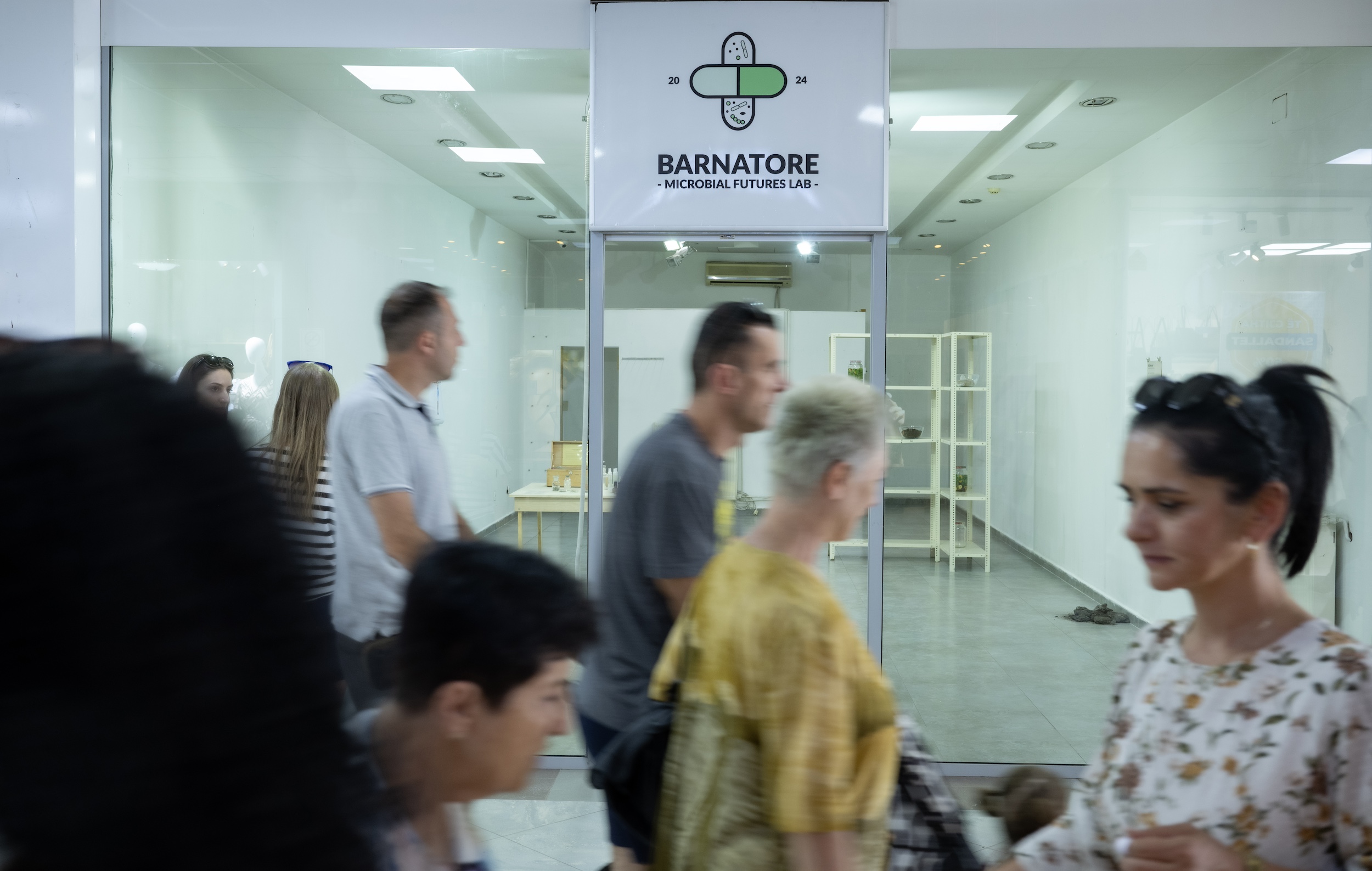 | |
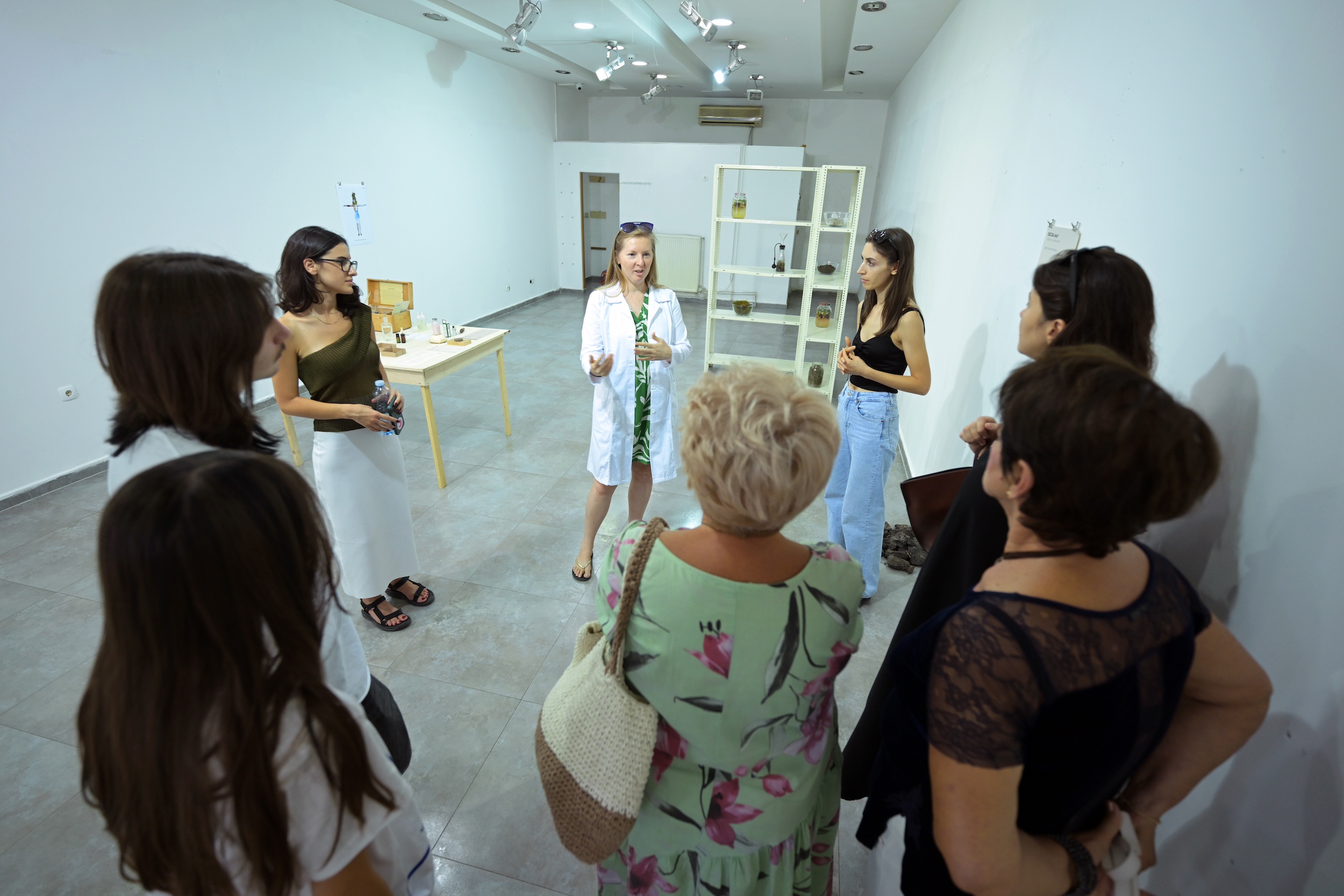 | 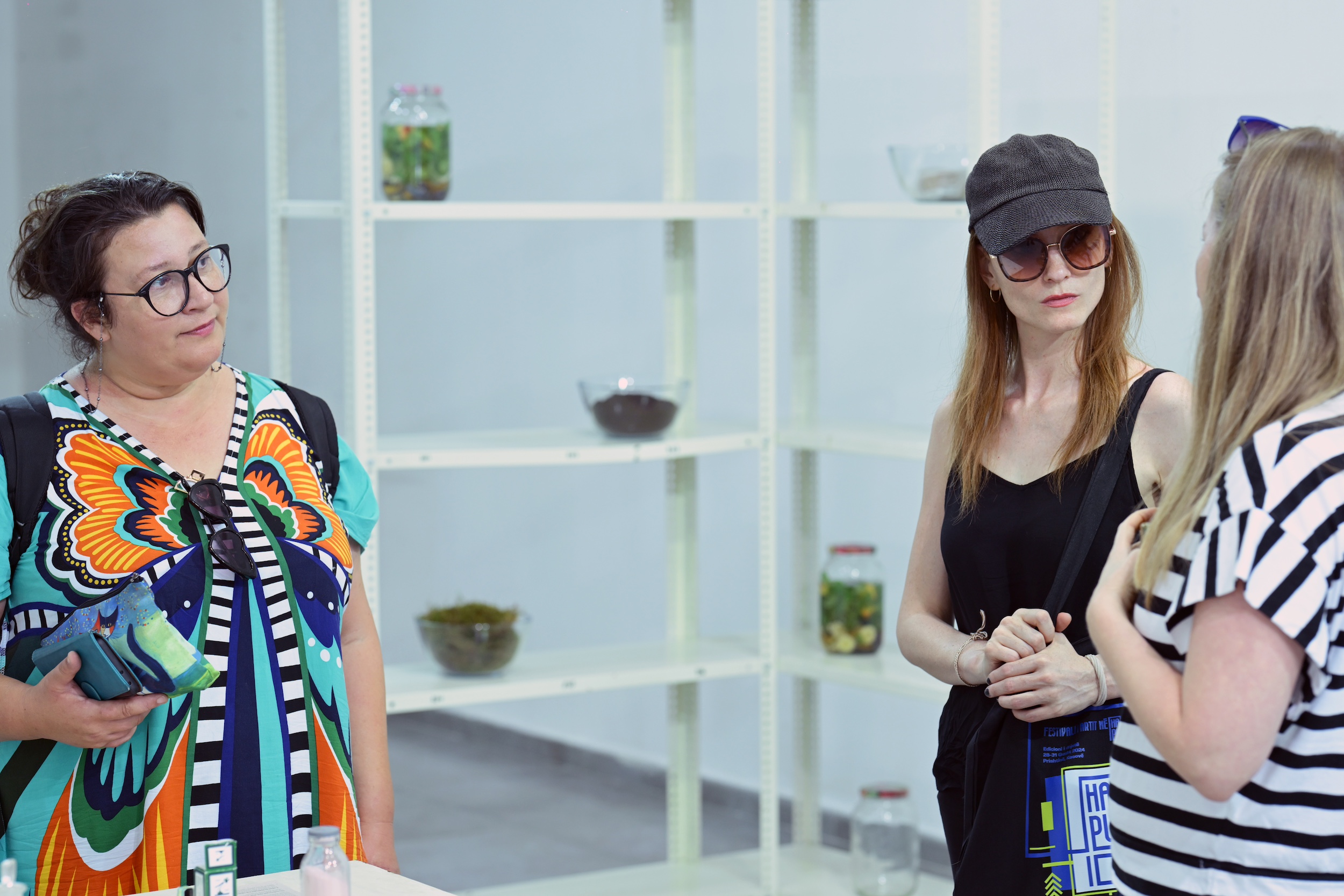 |
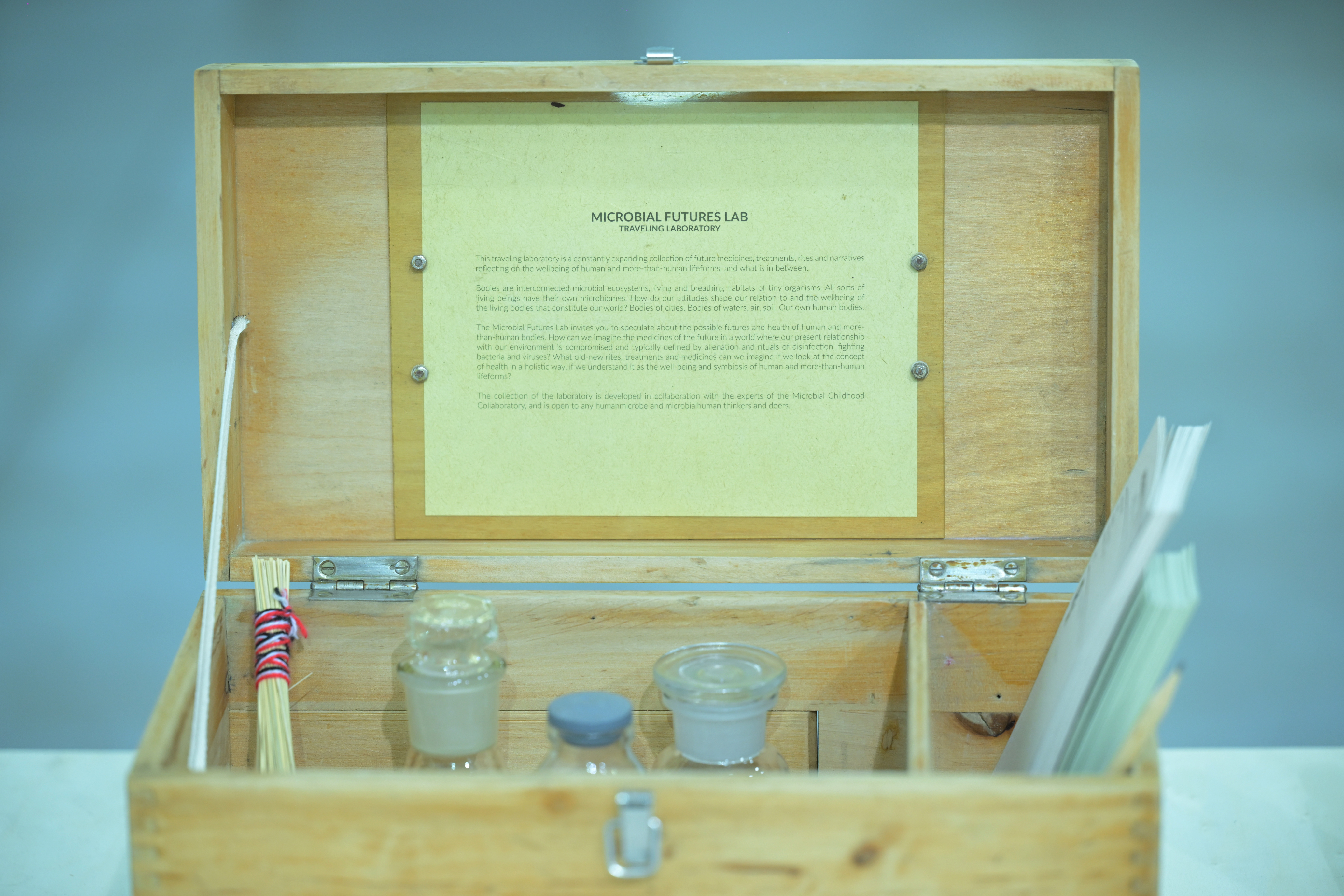 | |
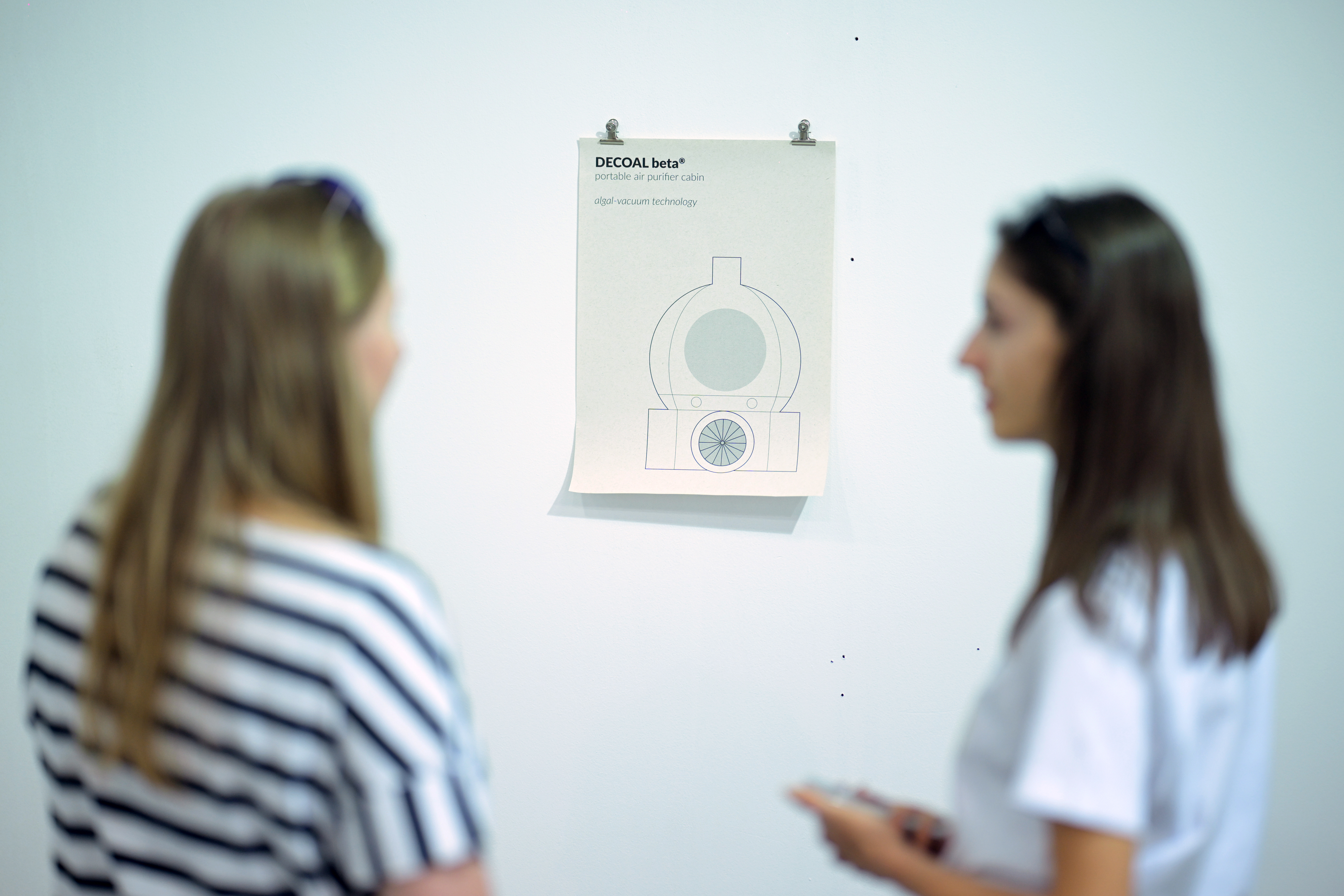 |  |
| © Eva Bubla: Microbial Futures Lab at HAPUfest, Pristina, 2024. Photo by Arben Llapashtica | |
 | |
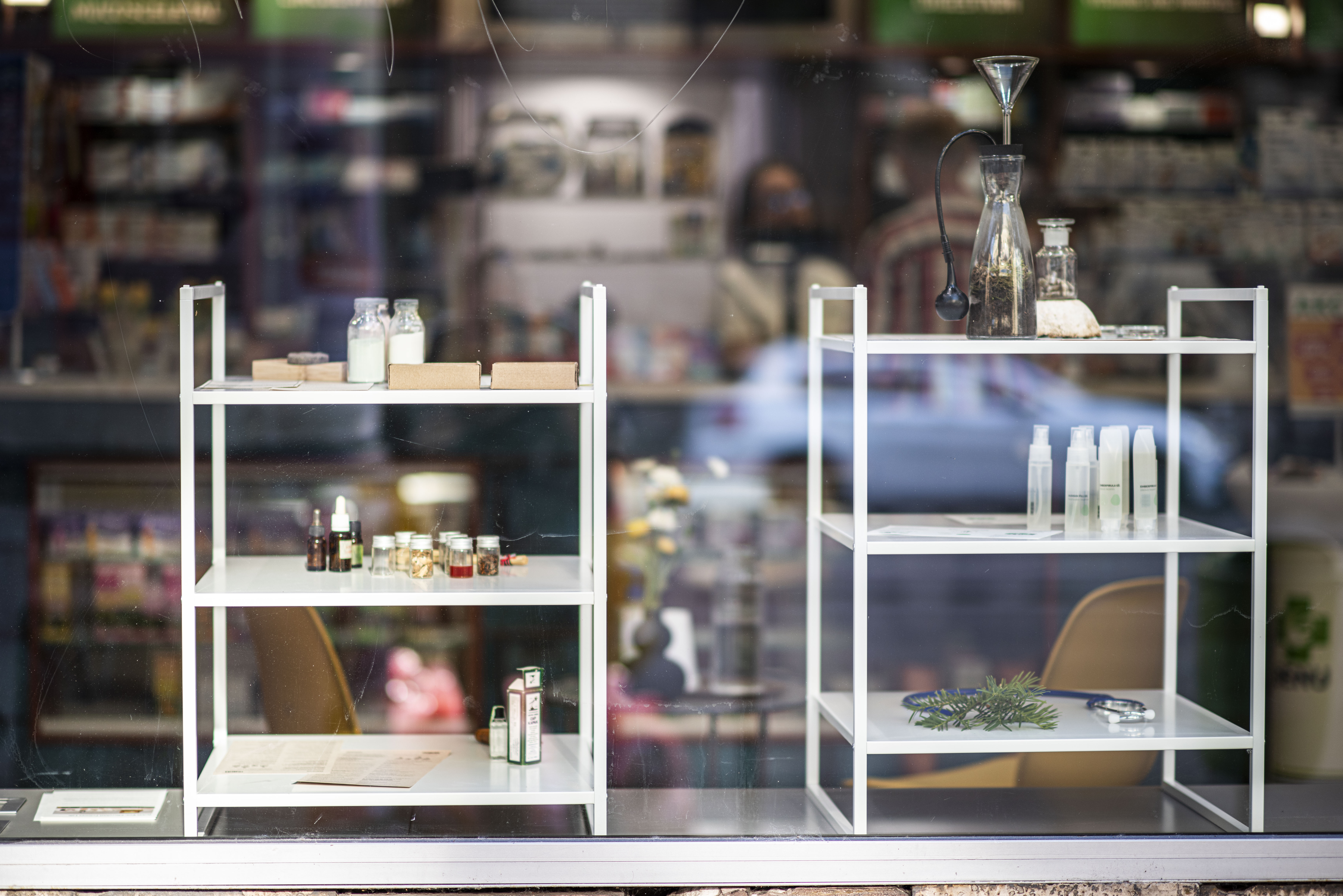 | |
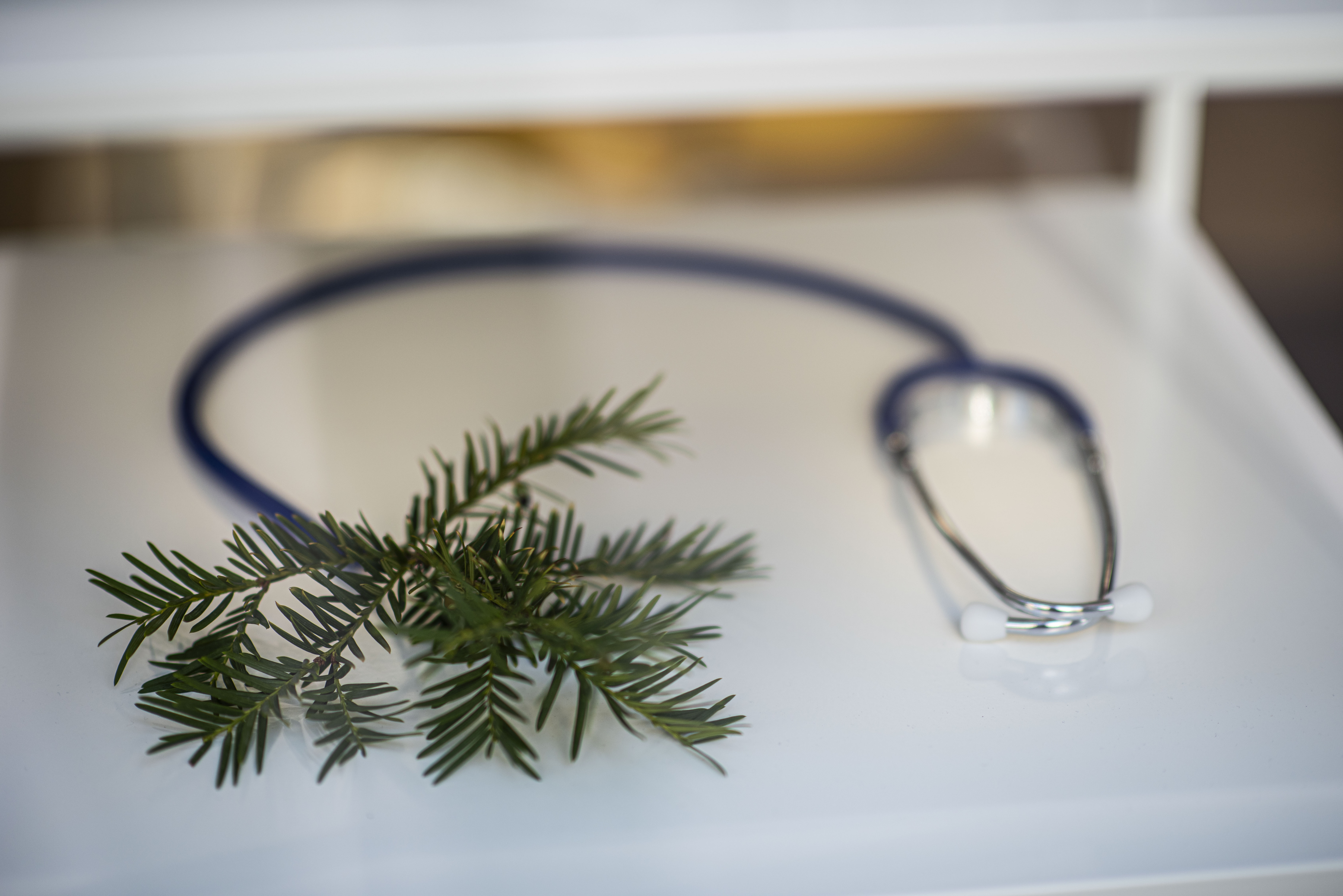 |  | 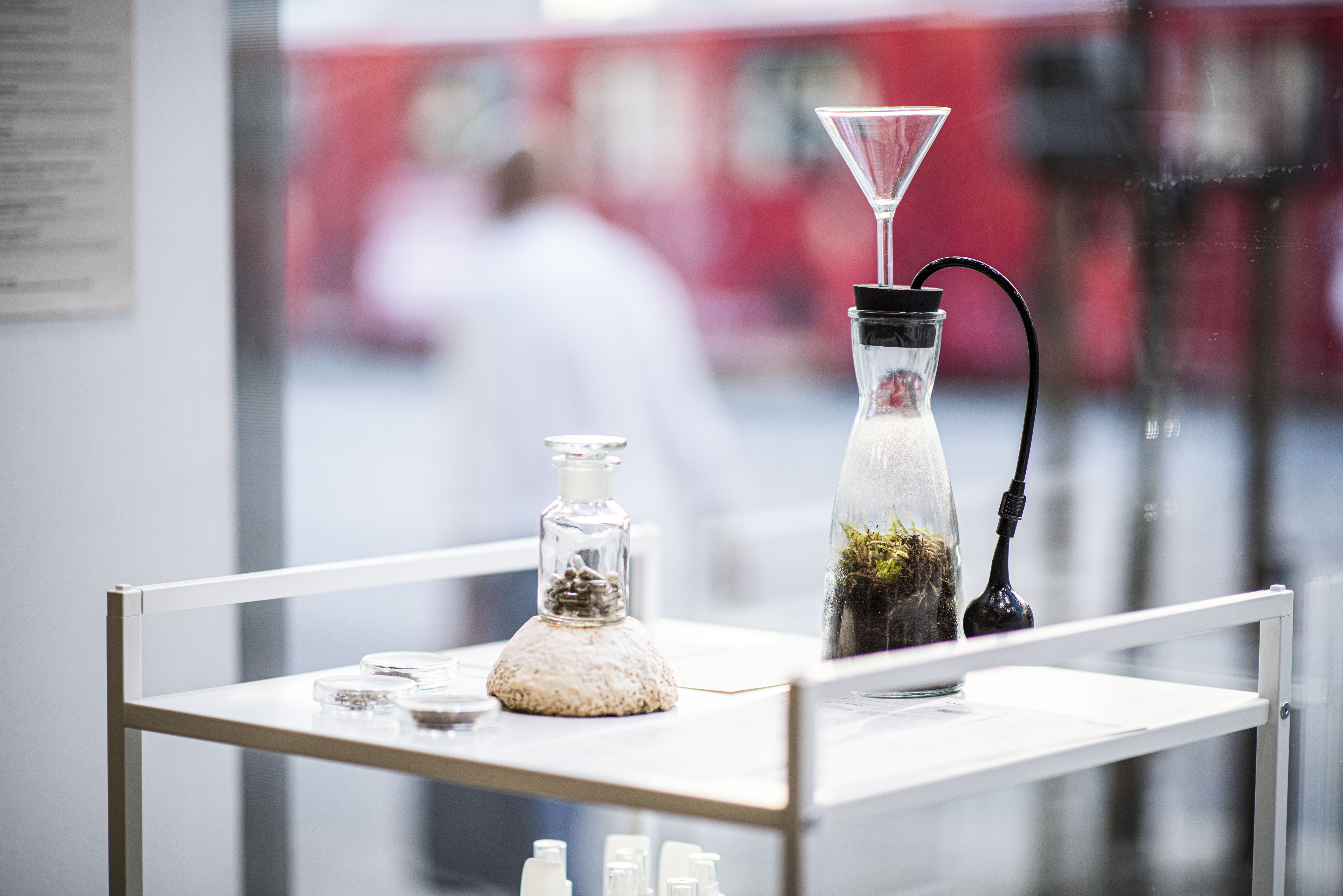 |
© Eva Bubla: Microbial Futures Lab at PLACCC, 2024. Photo by Attila Balogh | ||
The workshop was originally designed to facilitate the thinking of scientists about the relations and complexity of the human-microbial world, and to invite the wider public to think about those ideas, adding their own experiences. What I especially like in the process are the conversations that emerge during the sessions - and in the pop-up pharmacy -, both the scientific and local knowledge that gets its way through the diagnosis and treatment of our patients, who are mostly non-human. It is a fun experiment to shift perspectives and last but not least, it is also extremely valuable for me to learn from the narratives that come to the surface, to exchange experiences and ideas about an imagined utopian - or sometimes dystopian - future.
Circling back to the initial question: how do we engage non-humans in the co-creation of our public spaces?
I would feel too ambitious to say that I have a clear cut answer or recipe for that, but I intended to show some artistic strategies and methodologies that invite people into imaging the world from a more-than-human perspective based on science, local ecological knowledge, and a great deal of speculation. There is a chance that the experience of these thought experiments and encounters will lead to new (or forgotten) forms of connections with other species involved, and that their unheard voices will find their way into our hearts and minds as well when planning our future city, arranging our immediate surroundings, or just our daily routine next time.
1 Puig de la Bellacasa, M. Matters of Care: Speculative Ethics in More Than Human Worlds. University of Minnesota Press, Minneapolis, U.S. and London, U.K, 2017.
2 Roslund, M. I. et al. (2021) Biodiversity intervention enhances immune regulation and health associated commensal microbiota among daycare children. Science Advances 6(42)
